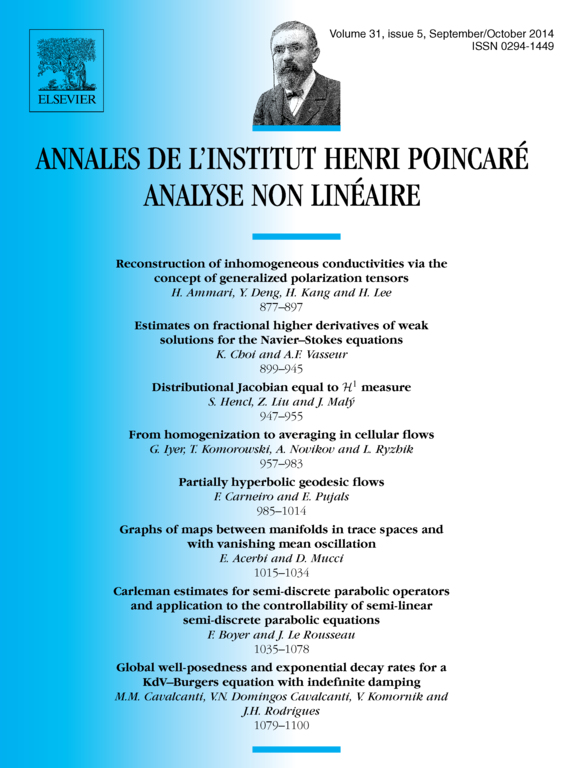From homogenization to averaging in cellular flows
Lenya Ryzhik
Department of Mathematics, Stanford University, Stanford, CA 94305, USAGautam Iyer
Department of Mathematical Sciences, Carnegie Mellon University, Pittsburgh, PA 15213, USATomasz Komorowski
Institute of Mathematics, UMCS, pl. Marii Curie-Skłodowskiej 1, 20-031, Lublin, Poland; IMPAN, ul. Śniadeckich 8, 00-956 Warsaw, PolandAlexei Novikov
Department of Mathematics, Pennsylvania State University, State College, PA 16802, USA

Abstract
We consider an elliptic eigenvalue problem with a fast cellular flow of amplitude , in a two-dimensional domain with cells. For fixed , and , the problem homogenizes, and has been well studied. Also well studied is the limit when is fixed, and . In this case the solution equilibrates along stream lines.
In this paper, we show that if both and , then a transition between the homogenization and averaging regimes occurs at . When , the principal Dirichlet eigenvalue is approximately constant. On the other hand, when , the principal eigenvalue behaves like , where is the effective diffusion matrix. A similar transition is observed for the solution of the exit time problem. The proof in the homogenization regime involves bounds on the second correctors. Miraculously, if the slow profile is quadratic, these estimates can be obtained using drift independent estimates for elliptic equations with an incompressible drift. This provides effective sub- and super-solutions for our problem.
Cite this article
Lenya Ryzhik, Gautam Iyer, Tomasz Komorowski, Alexei Novikov, From homogenization to averaging in cellular flows. Ann. Inst. H. Poincaré Anal. Non Linéaire 31 (2014), no. 5, pp. 957–983
DOI 10.1016/J.ANIHPC.2013.06.003